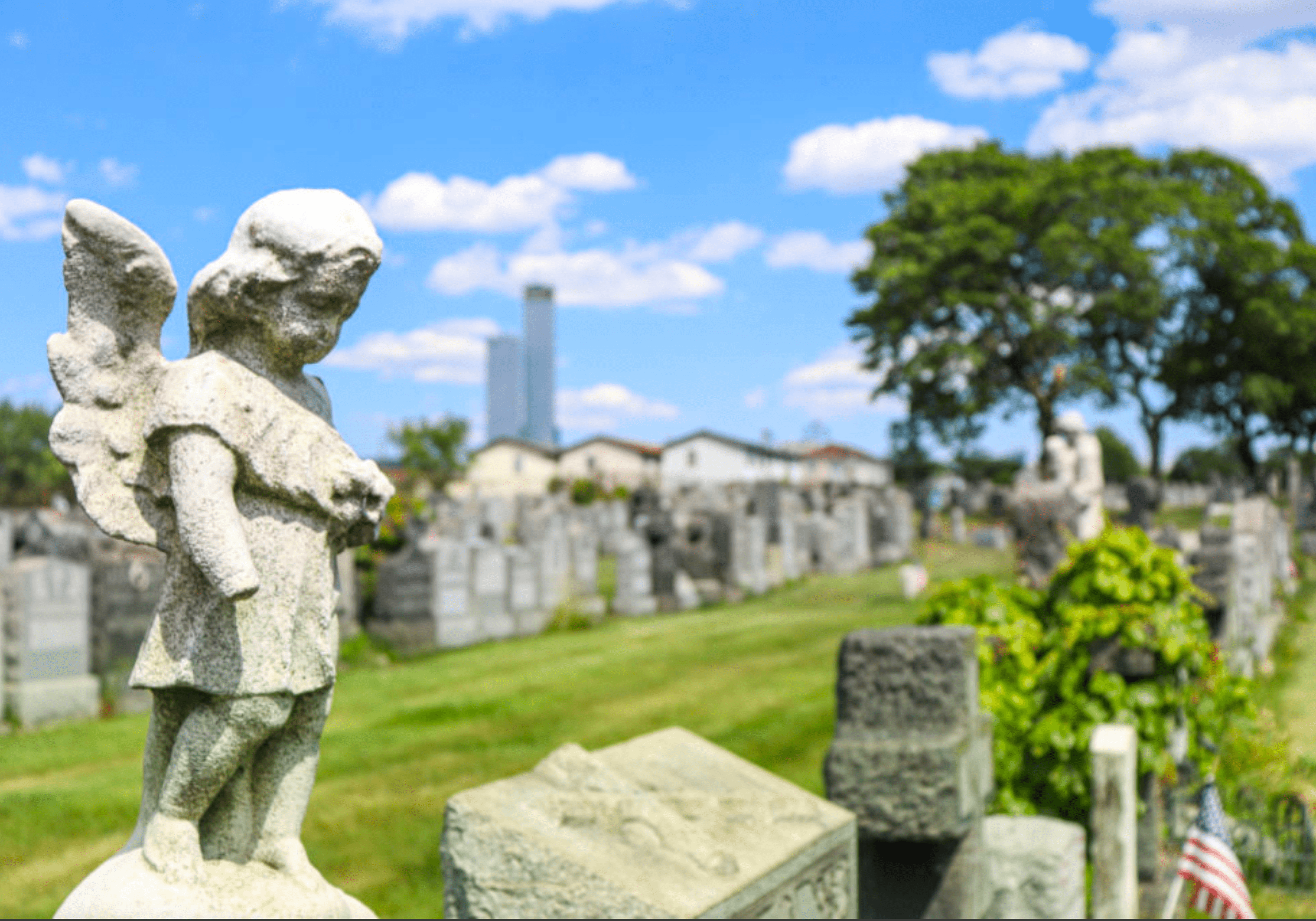Priest explains what’s allowed in Catholic funeral and burial practices
Father Patrick Carrion, a priest for more than 40 years, has headed the Office of Cemetery Management for the Archdiocese of Baltimore for the past 15 years. And he always knew he’d eventually be described as someone who has seen and heard it all when it comes to questions about Catholic funeral and burial practices.
That doesn’t faze him. He’s more than happy to share what he’s experienced, and to clarify expectations for Catholic burials, handling of remains and ashes, and the pesky matter of eulogies.

Catholic Cemeteries within the Archdiocese of Newark has six cemeteries. An open house will be Saturday, Nov. 11, and Sunday, Nov. 12, from 8:30 a.m.-4:30 p.m. at Holy Name Cemetery and Mausoleum located at 823 West Side Ave., Jersey City for those wanting to find out more information on Catholic burials. For more information click here.
Burying the dead is a corporal act of mercy. Everything centers on the belief in the intact body, since baptism makes individuals temples of the Holy Spirit. Catholic belief is that upon death, the soul meets God, and God gives incorruptible life to bodies by reuniting them with their souls.
Burials as they have been done in the United States for the past century — embalmed body, sealed casket in a concrete vault — are accepted, although Father Carrion points out that billions of coffins take up a lot of land and cemetery “perpetual care” means the land will never have another use.
His own preference — something he’s chosen for himself — is what’s called a “green” burial, in which coffin, remains and shroud decompose into the soil, with no embalming of the body.
It’s permitted and regulated in Maryland, and used to be the only kind of burial in family graveyards and churchyards, although most cemeteries now don’t permit it out of concern for contaminating groundwater.
“It’s what our ancestors did,” said the pastor of St. Francis of Assisi, Shrine of the Little Flower, St. Dominic, St. Anthony of Padua and Most Precious Blood, all in Baltimore. “It’s not irreverent to bury someone on top of someone else.”
So-called “composting burials” are legal in just seven states, but not Maryland. In these, the body is converted to soil after first being placed in a sealed chamber with water and chemicals which are then heated in a process called alkaline hydrosis. This reduces the body to bone fragments.
This is “just totally unacceptable to us,” Father Carrion told the Catholic Review, Baltimore’s archdiocesan news outlet. “It’s just dissolving the body. At least with ashes, there’s something to bury.” A composting process “is saying that the body never existed.”
Which brings us to cremations and urns.
Cremated remains are considered the same as intact bodies — cremation was first permitted by the Vatican in 1963 and part of canon (church) law since 1983.
But urns are to be placed in mausoleums or columbariums, not kept at home, and cremated remains are not to be scattered or split up.
It’s a question that often comes up, Father Carrion said.
“Sometimes people want to put parts of the ashes into earrings or necklaces,” he said. “You’re treating the deceased as if it is a possession of yours. You don’t possess people.”
Human remains, he pointed out, are “for the whole people of God.”
Each November, the month of All Souls, the archdiocese, through the Ministry of the 14th Station of the Cross, buries urns in a single vault at Holy Cross Cemetery in Anne Arundel County. There is a minimal fee of $350.
This mass inurnment — each urn is handled individually in the rite — comes from many sources other than families, since authorities call Father Carrion’s office when urns are found in abandoned houses, and on one occasion, in the trunk of a car that was about to be demolished at a scrap yard.
Twice a year, Father Carrion’s office also holds services for collective burials, in a marked gravesite, of miscarried babies, provided by hospitals upon request of the parents.
“It says to us as Catholics that this was a person from the moment of conception,” Father Carrion said. “It gives families some closure.”
Eulogies are always a contentious matter. Simply put, they’re not part of the funeral Mass, and they’re “what most priests will talk about as a difficult hurdle,” Father Carrion said.
“That’s not what our ritual is meant to be,” he explained, noting that the ritual says that those activities should occur at the wake, although most people still want them at the church.
If families strongly desire eulogies at the funeral Mass, Father Carrion asks them to take place before the body is brought into the church, as an extension of the wake.
Father Carrion conceded that lengths of eulogies have crept up because of all the eulogies people see at state funerals and those of celebrities.
But they’re not as easy to give as people who are not professional speakers think they are.
There’s a way around that, though. When he’s asked, the pastor sets a five-minute limit on a eulogy, which is easy to calculate. A full typed page, double-spaced, takes two minutes to read. So two pages is the max and Father Carrion usually limits the number of eulogists to two.
Archdiocese of Newark Cemeteries will host a Memorial Mass on Wednesday, Nov. 8, at 4 p.m. in the Cathedral Basilica of the Sacred Heart in Newark to remember all priests and deacons of the Archdiocese of Newark who died in the past year. Cardinal Joseph W. Tobin, C.Ss.R. Archbishop of Newark, will be the principal celebrant. All are invited to attend the Mass.
This article is written by Kurt Jensen for the Catholic Review, the news outlet of the Archdiocese of Baltimore. Jaimie Julia Winters contributed to the report. For more information on Catholic Cemeteries of the Archdiocese of Newark click here.


